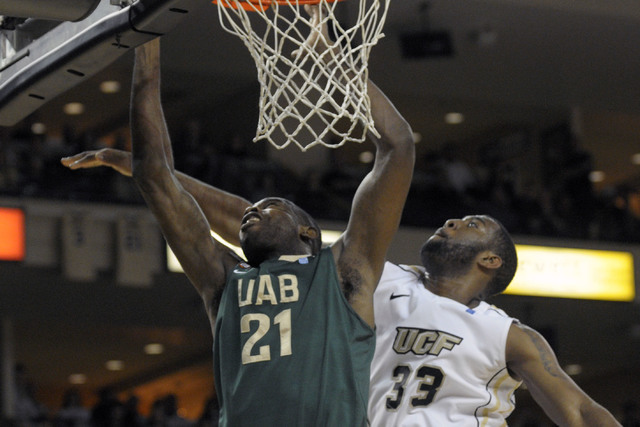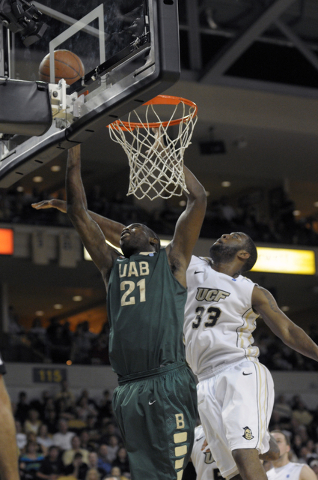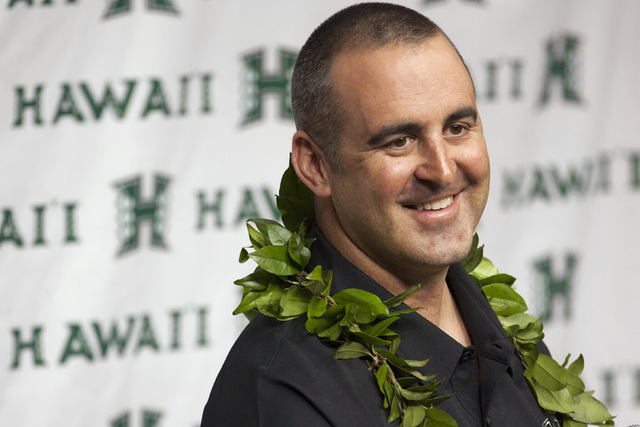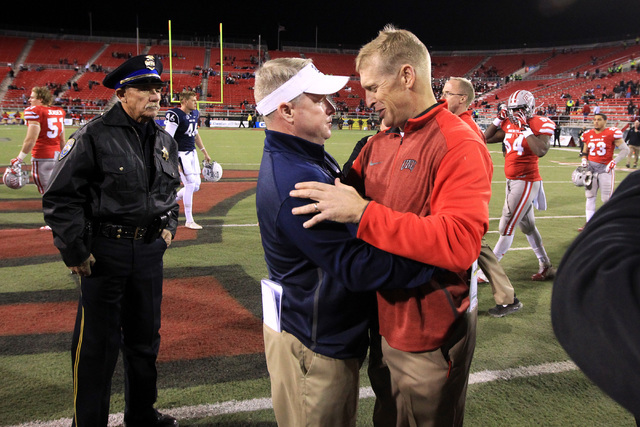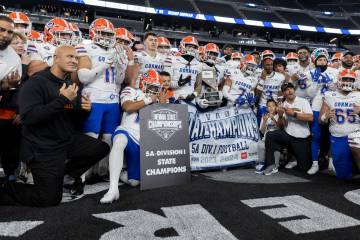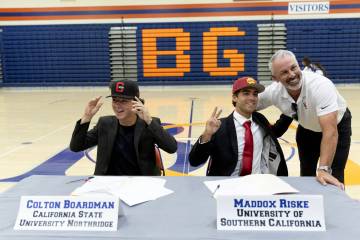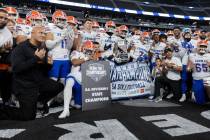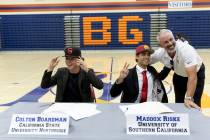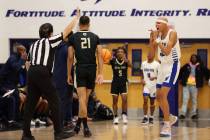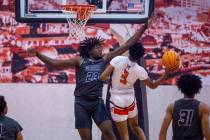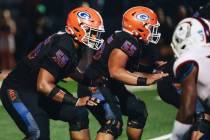Recruiting Game: Rankings don’t always tell the whole story
The internet wormhole for the legendary high school boys basketball class of 2007 is a deep one. It’s easy to get lost down there for hours.
That year, Rivals.com ranked 28 players as five-star recruits, and among the names were several current NBA players, including Blake Griffin, James Harden, Kevin Love and Derrick Rose. The No. 26 overall prospect was a 7-foot center from Decatur, Illinois. Beas Hamga.
Remember him?
Hamga signed with UNLV — for local sports trivia buffs, he was one of only two five-star players during the Lon Kruger era (Wink Adams was the other) — and, based on his lofty ranking, many locals projected the native of Cameroon to star for the Rebels after an NCAA-mandated redshirt season.
Instead, Hamga played 26 minutes in five games at UNLV. He transferred to Valparaiso, where he spent one semester before heading to junior college, then finished his career at Alabama-Birmingham.
In three seasons of Division I basketball, Hamga scored 16 points.
All this is brought up not to belittle Hamga or troll UNLV fans; coaches and scouts frequently miss in recruiting. Rather, his tale begs the question, what exactly should fans expect from a five-star recruit? And how much stock should we put in all these rankings anyway?
“Recruiting rankings are solely for entertainment purposes,” warned Anthony Brown, director of the Las Vegas Prospects travel basketball program.
Recruiting rankings have existed in various forms for decades, but exploded in popularity after Seattle-area entrepreneur James Heckman launched an internet startup called RivalsNet in 1997. The company, which later rebranded to Rivals.com, featured a network of school-specific websites dedicated to covering college basketball and football.
Rivals.com went bankrupt and was sold in 2001, but had found its niche producing recruiting content and ranking the top prep basketball and football players. The site’s new owners moved to a subscription-based business model, and Yahoo purchased Rivals for close to $100 million in 2007.
Two years earlier, Fox paid $60 million for Scout.com, a competing network of recruiting sites that was founded by Heckman. CBSSports.com, ESPN.com and others also jumped into the growing industry around the same time.
Basketball and football dominate the recruiting traffic online, but player rankings now can be found for almost every sport. For instance, Green Valley girls swimmer Abby Richter is ranked No. 21 in the class of 2017 by CollegeSwimming.com.
“People want to see what’s going on, who’s the next high school kid coming up in their area, who’s their team and their college recruiting,” first-year Hawaii football coach Nick Rolovich said. “In recruiting, you’ve got to look for any angle you can to either get names or connect with the young men and the family. At least for our program, we would be ignorant to not use those resources.”
In basketball and football, high school prospects are given a rating based on live evaluations, game film/highlight videos, offseason camps and all-star games, then ranked in order of talent and positional importance, according to Mike Farrell, the national football recruiting director for Rivals.com. An offensive center never will be the No. 1 prospect in football, for example.
Farrell said five-star recruits are those he projects to be college All-Americans and first-round picks in the NFL Draft, while four-star recruits are viewed as future all-conference players and mid- to late-round draft picks.
“It’s come to the point where anybody ranked a three-star is underranked. Anybody,” Farrell said. “They could be the highest-ranked three-star at their position and fans are disappointed. It’s four (stars) or higher or bust. That’s just the nature of fans.”
Colleges are quick to tout their recruiting classes’ ranking on signing day, but all those stars potentially are creating a lot of false hope for fans and players. Consider:
• Scout.com had a staggering 51 players listed as five-star — essentially “can’t miss” — recruits in its class of 2012 football rankings. (In comparison, Rivals.com had 26 and ESPN.com 11.)
• For the class of 2016, Scout.com had 391 football players rated as four- or five-star recruits, nearly 100 more than Rivals.com or ESPN.com. Using Farrell’s definitions as a loose guideline, that means anywhere from 9 to 12 percent of all Football Bowl Subdivision signees in February were projected to one day be selected in the NFL Draft.
Even taking into account injuries and attrition, that number is wildly disproportionate to statistics provided by the NCAA showing only 1.6 percent of all eligible college football players were drafted in 2015.
“The people who are like, ‘Hey, let’s rank the Mountain West recruiting classes.’ Come on!” UNR fourth-year football coach Brian Polian said. “You mean to tell me that you’ve watched every kid? All they do is look at the stars, and they don’t know who’s going to be what, because the vast majority of the recruiting that goes on in this league is player development.
“It’s projection. ‘What are they going to be?’ not, ‘What are they in high school?’ So these guys, ‘They have the ninth-ranked recruiting class in the Mountain West.’ Please. Are you kidding me? … Even half the (Atlantic Coast Conference recruits), you can’t tell me who’s going to play and who’s not.”
When Hamga arrived at Valparaiso in early 2009, he lamented how his five-star rating added more pressure from UNLV fans.
“(The expectations) were too much at UNLV,” Hamga said at the time.
Wyoming football coach Craig Bohl said last month at Mountain West media days he once was asked by a local reporter why the Cowboys weren’t signing recruits with more stars next to their name. The former North Dakota State coach reminded the interrogator that quarterback Carson Wentz had no stars when he was recruited by Bohl and went on to be the No. 2 pick in the NFL Draft in May.
“We make mistakes all the time,” Farrell said. “It’s absolutely impossible to project these guys, and having done this so long, at first I was defensive early in my career. But now, I’m more than willing to point out somebody who wasn’t ranked properly. I think it’s fun, and again, rankings aren’t to be taken that seriously.”
Contact reporter David Schoen at dschoen@reviewjournal.com or 702-387-5203. Follow him on Twitter: @DavidSchoenLVRJ



